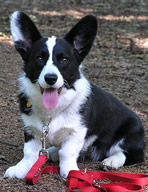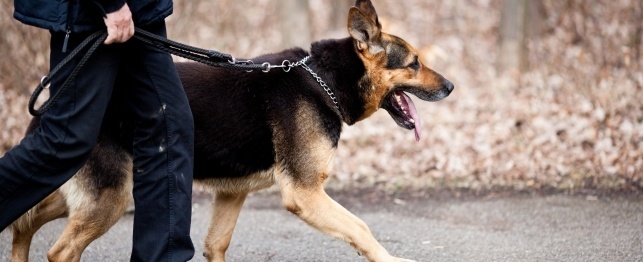
The Weimaraner is a medium to large sized bird dog with a muscular body, a
deep chest and a long neck with a slightly pointed face. Its long ears are
folded and hang close to the head and its tail is usually cut-off to a length
of about 6 inches. It was developed in Germany from ancestors that probably
included bird dogs, bloodhounds and Great Danes. Also known as the “The
Forester’s Dog”, it was a breed that fulfilled all the requirements
of a German hunter. It possesses fine aristocratic features while at the same
time having a body that is of the functional working type.
Life Expectancy:
10-12 years
Energy Level:
Higher than average.
Living Conditions:
Inactive indoors, so fine for apartment with supplemented outdoor exercise.
Barking:
Average.
Exercise Needs:
Daily 30 minute walk. Hiking.
Breed Group:
Sporting
Size:
Medium-Large
Height:
23 to 27 inches
Weight:
55 to 75 pounds
Standard Hair Colors:
Solid color ranging from mouse-gray to silver gray.
National breed club:
The Weimaraner Club of America
The Weimaraner is a pointer and an all around hunting dog which was used to hunt, track and bring down big game. It eventually adapted to smaller game and upland birds as big game became scarce. It is both an excellent water and land retriever. The breed has been widely used as search and rescue dogs, service dogs for the disabled and police dogs in some European countries.
Friendly yet assertive, obedient yet headstrong, fearless yet sensitive are just some of the words that can best describe a Weimaraner. Its unique personality coupled with its fierce loyalty to humans is largely responsible for its appeal. It is dependent on human companionship and thrives best when included in family activities. It responds well to loving and soft treatment and deteriorates under harsh discipline. Early experienced training is recommended although repetitive training is not advisable as it easily gets bored. Safety risk to children is primarily due to its being highly energetic and not to any trace of viciousness.
Weimaraners are powerful working dogs with immense stamina thus the need for regular exercise and frequent opportunities to hike, play, romp and enjoy running free in a field. Failure to provide sufficient work-out might result to destructive indoor activity.
Weimaraners can live in apartments as long as they get sufficient exercise. They exhibit relative inactivity indoors and will benefit in having regular access to at least a large yard.
Peak condition in a Weimaraner’s coat is easily achieved through brushing with a firm bristle brush and occasional dry shampooing. Bathing in mild soap is only done when necessary but nails should be kept trimmed. Average shedding is expected.
Generally a hardy dog, a Weimaraner is prone to bloat. This is a disease that involves twisting of the stomach with a subsequent blockage of the esophagus at one end and the intestine at the other. To avoid a possible attack, Weimaraners are best fed two to three small meals a day instead of one large meal. They are also susceptible to hip dysplasia, Von Willebrand’s Disease (a bleeding disorder), tumors, allergies and hernias.
...for its intense devotion to humans or its thoroughness of search when hunting, then you can try a Vizsla. Both breeds are not kennel dogs and would love to share every part of its owner’s life.

 Scottish Terriers: A guide to dogs and puppies of the Scottish Terrier breed
Scottish Terriers: A guide to dogs and puppies of the Scottish Terrier breed
 Cardigan Welsh Corgis: A guide to dogs and puppies of the Cardigan Welsh Corgi breed
Cardigan Welsh Corgis: A guide to dogs and puppies of the Cardigan Welsh Corgi breed
 Lagotto Romagnolo Breed Profile
Lagotto Romagnolo Breed Profile
 Lhasa Apso
Lhasa Apso
 Lhasa Apsos: A guide to dogs and puppies of the Lhasa Apso breed
Lhasa Apsos: A guide to dogs and puppies of the Lhasa Apso breed
 Dogs Good For Men - 13 Manly Masculine Dog Breeds
Dogs Good For Men - 13 Manly Masculine Dog Breeds
 Scottish Terrier
Scottish Terri
Scottish Terrier
Scottish Terri
 Border Collie
Border Collie
Border Collie
Border Collie
 Cocker Spaniels: A guide to dogs and puppies of the Cocker Spaniel breed
The Cocker Spaniel!
The Cocker Spaniel is a small and solid
Cocker Spaniels: A guide to dogs and puppies of the Cocker Spaniel breed
The Cocker Spaniel!
The Cocker Spaniel is a small and solid
 Bernese Mountain Dogs: A guide to dogs and puppies of the Bernese Mountain Dog breed
The Bernese Mountain Dog!
The Bernese mountain dog is a bre
Bernese Mountain Dogs: A guide to dogs and puppies of the Bernese Mountain Dog breed
The Bernese Mountain Dog!
The Bernese mountain dog is a bre
 Belgian Sheepdog
Belgian Sheepd
Belgian Sheepdog
Belgian Sheepd
Copyright © 2005-2016 Pet Information All Rights Reserved
Contact us: www162date@outlook.com